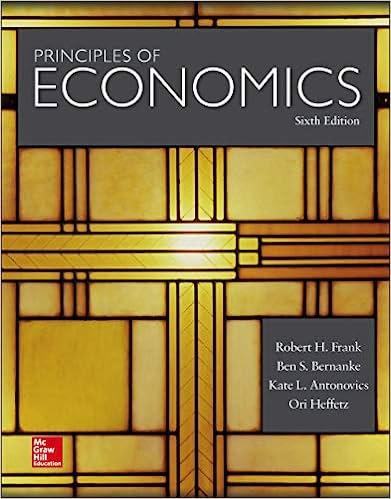Question
please include Introduction, body conclusion and your opinion with examples. Q1. Case/situation: Understanding the impact of changes in government purchases on output is a key
please include Introduction, body conclusion and your opinion with examples.
Q1. Case/situation:
Understanding the impact of changes in government purchases on output is a key part of fiscal policy analysis, and the question periodically takes center stage as economies move through stages of business and political cycles. The implementation of fiscal stimulus packages across OECD countries in the early phase of the 2008-2009 crisis spurred a lot of work on the size of the government spending multiplier associated with increases in government purchases.1 A few years later, the mirror-image question the effect of contractionary fiscal policy became the center of attention as the rapid rise in government debt levels led to a swift shift to fiscal consolidation, particularly in continental Europe.2 Unfortunately, despite intense scrutiny, the range of estimates for the government spending multiplier remains wide, with estimates lying between 0.5 and 2
Q1.Using the above case; Analyzehow do the values of the tax multiplier and the government spending multiplier change as the MPC increases? discuss why the multipliers change. If the MPC were 0, what would the government spending and tax multipliers equal? If the MPC were 1, what would the government spending and tax multipliers equal?
Q2. Case/situation:
Such inequality could matter for macroeconomics if households with different amounts of wealth respond differently to the same aggregate shock. Indeed, microeconomic studies have often found that the annual marginal propensity to consume out of one-time income shocks (henceforth, the MPC) is substantially larger for low-wealth than for high-wealth households. In the presence of such microeconomic heterogeneity, the aggregate size of, say, a fiscal shock is not sufficient to compute the shock's effect on spending; that effect will depend on how the shock is distributed across categories of households with different MPCs. Poterba (2000) has suggested that the marginal propensity to consume out of wealth may have declined in the 1990s. According to Poterba, the main reason for this decline is the growing importance of equities in household wealth. Since the number of households holding equities is still lower than the number holding many other kinds of assets, and since a growing part of equity investments are held in tax-favored retirement accounts, the marginal propensity to consume out of equity wealth may be small.
Q2. Describe what effect an increase in the marginal propensity to save will have on the slope of the planned aggregate expenditures line and on the size of the multiplier, with examples.
Q3. Case/situation:
In summer 2007, U.S. and global financial markets found themselves facing a potential financial crisis, and the U.S. Federal Reserve found itself in a difficult situation. It was becoming clear that banks and other financial institutions would ultimately lose tens or even hundreds of billions of dollars from their exposure to subprime mortgage market loans. Bank lending is closely tied to bank capital or net worthspecifically, bank regulators require that loans not exceed a certain multiple of capital. Thus, the Federal Reserve faced the danger of a sharp contraction in credit and bank lending in a way that threatened a deep recession or worse. When this kind of event happens, the job of the central bank is to assure that financial institutions have the necessary funds to conduct their daily business; that they have the "liquidity" they need to make timely payments and transfers.
Q3. Demonstrate what are the three tools of the Federal Reserve? Describe with examples of how each can be used to increase the money supply.
Step by Step Solution
There are 3 Steps involved in it
Step: 1

Get Instant Access to Expert-Tailored Solutions
See step-by-step solutions with expert insights and AI powered tools for academic success
Step: 2

Step: 3

Ace Your Homework with AI
Get the answers you need in no time with our AI-driven, step-by-step assistance
Get Started


